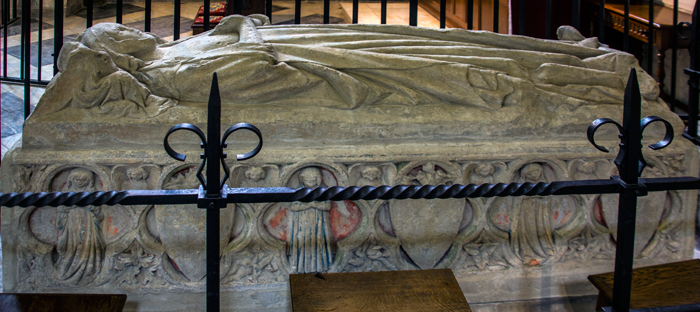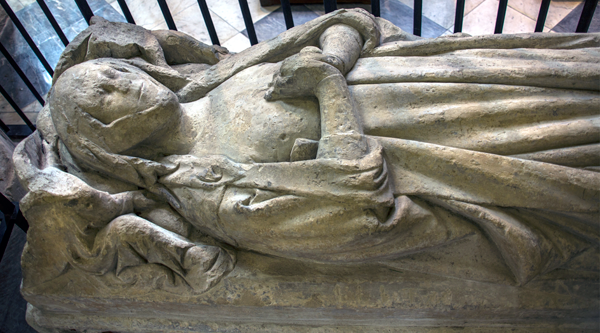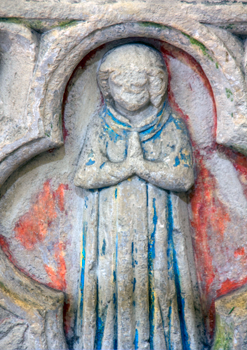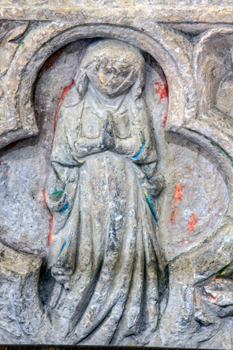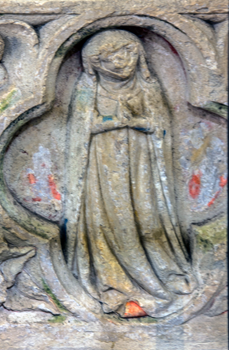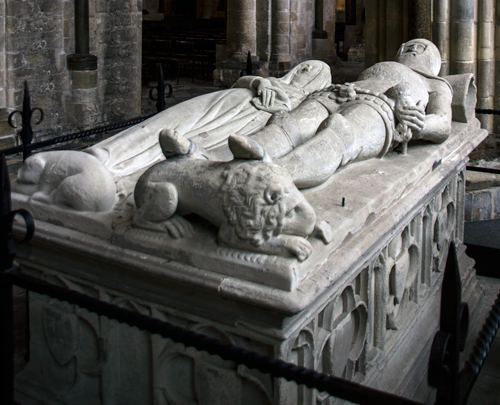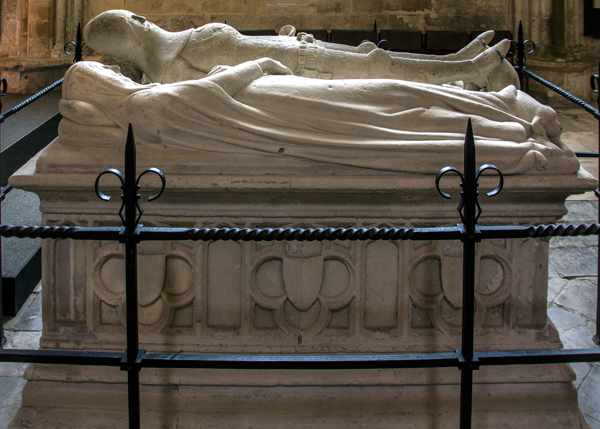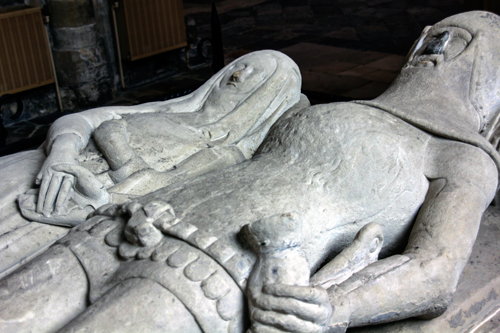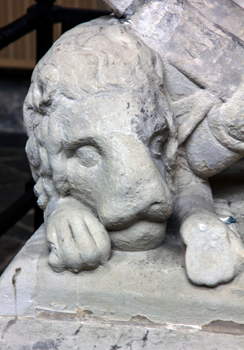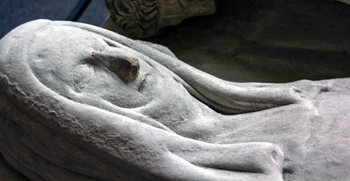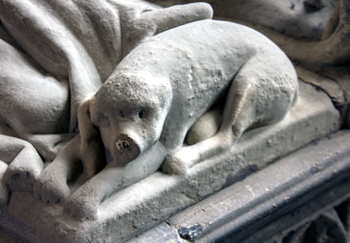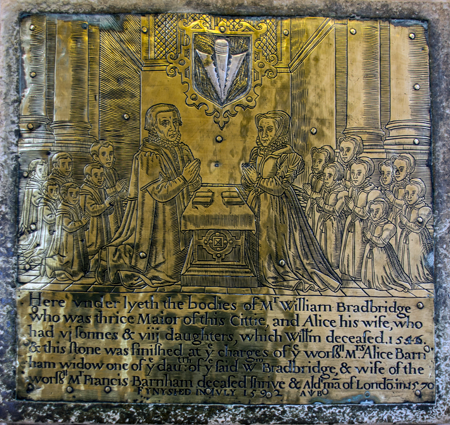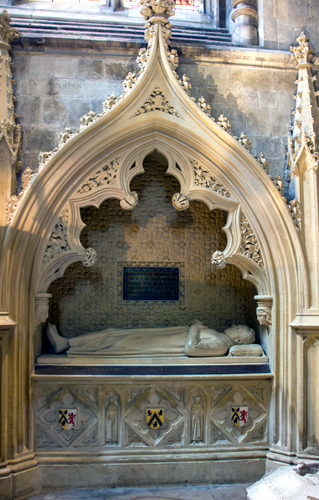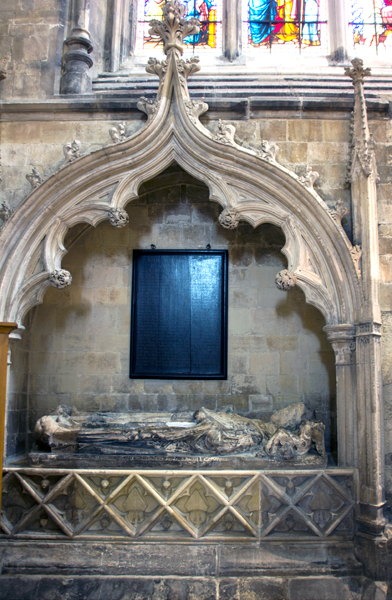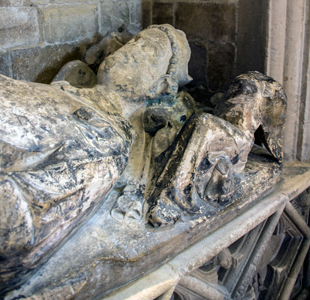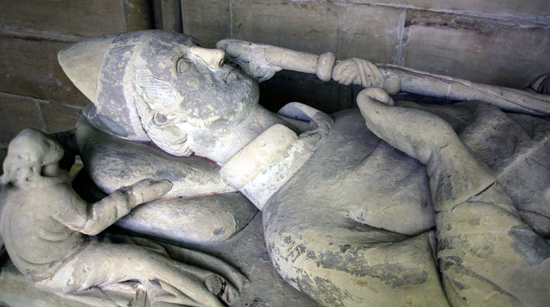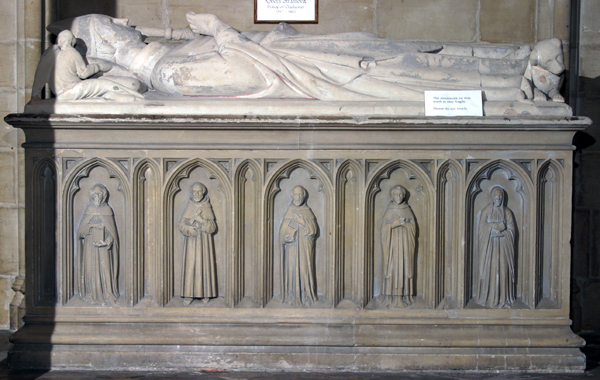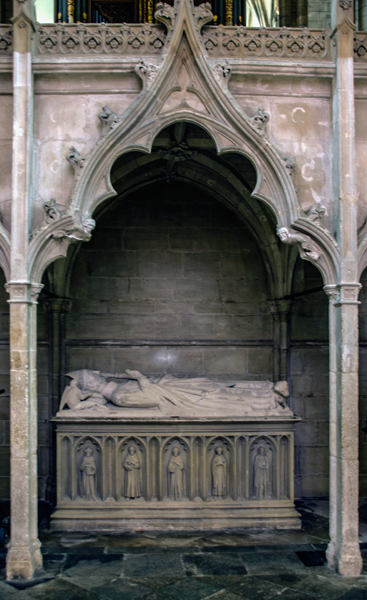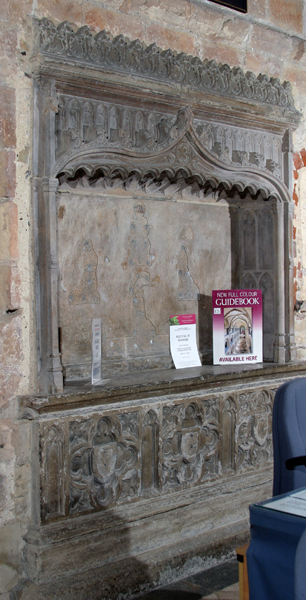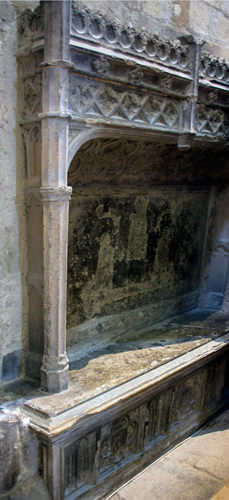 |
SUSSEX |
 |
| Boxgrove Chichester Racton Ringmer Rye Thankeham |
 |
 |
Chichester Cathedral |
 |
 |
| A very friendly cathedral. Open
during normal hours: there is neither entrance fee nor
charge for photography. However, donations are very
welcome, the suggested amount being unusually modest.
No parking at the cathedral and the nearby city parking
is rather expensive. Chichester Cathedral is Cathedral of the Old Foundation. The see was founded at Selsey circa 709 and moved to Chichester in 1075 |
| These photographs were taken during a very brief visit to the Cathedral and I apologize if there is anything that I have omitted or for any errors made. Please let me know any corrections or additions that might almost certainly be needed. I have arranged the entries as the monuments would be seen following a clockwise perambulation around the church starting at the west door. There are two good articles on the monuments in Chichester Cathedral, both by Dr Harry Tummers, founder-member of the Church Monuments Society: a chapter in Chichester Cathedral A Historical Survey (Ed Mary Hobbs) and the article on the medieval effigial tombs in Church Monuments Volume III 1988. However be careful reading the map and inventory in the book as some monuments have been moved, often several times, since and before this was compiled; Chichester seems particularly prone to this! Fortunately Amada Miller send me a number of photographs of Chichester a little while ago which have only recently turned; I have replaced my photographs by her superior ones and added some new photographs of monuments I had failed to record. |
| West Porch North West Tower (St Michael's Chapel) North Aisle & Outer Aisle North Transept & North East Chapel North Choir Aisle Retrochoir: North Aisle & North-East Chapel Choir Retrochoir Lady Chapel Retrochoir - South Aisle & SE Chapel Choir - South Aisle South Transept South Aisle South-West Tower |
| West Porch | |
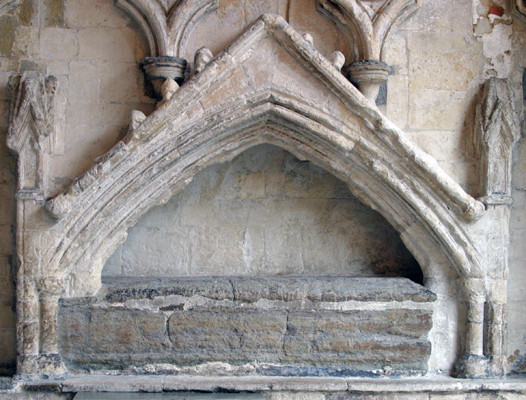 |
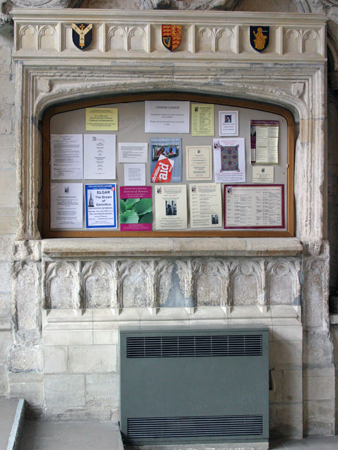 |
| Above: Said
to be of Bishop Stephen de
Berghsted (1280) (also Berksted) Right: Said to be of Dean William Milton (1424); unfortunately, now used as notice board. |
|
| North West Tower or St Michael's Chapel | |||
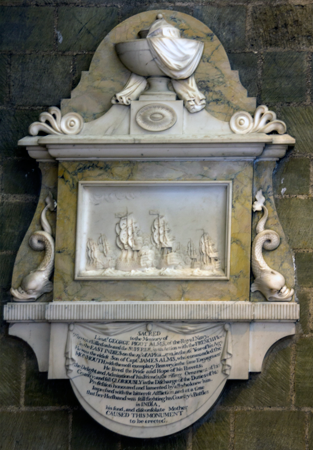 |
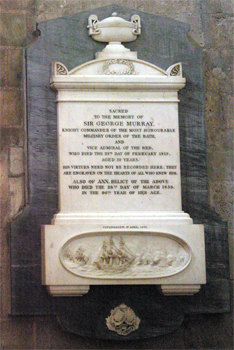 |
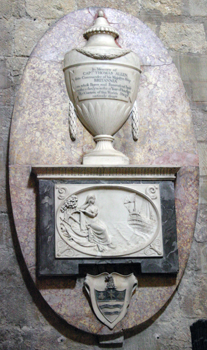 |
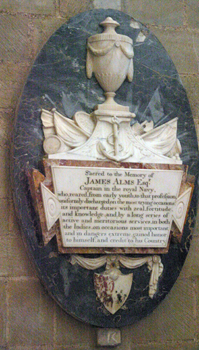 |
| Left: Lt George Pigot Alms RN (1782). Killed on board the Superbe in action with the French fleet in the East Indies. By George Harris. Above left: Vice Admiral Sir George Murray (1819) The monument shows the Battle of Copenhagen. By J. Kendrick. Above centre: Captain Thomas Allen RN (1781) By George Harris. Above right: Captain James Alms RN (1791) was father Lt Alms (above) Attrib. to George Harris but the remains of inscription refute this. | |||
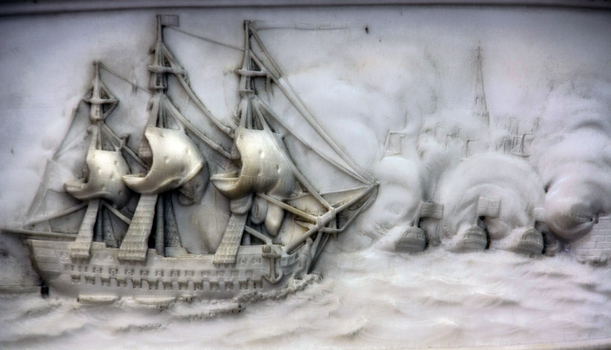 |
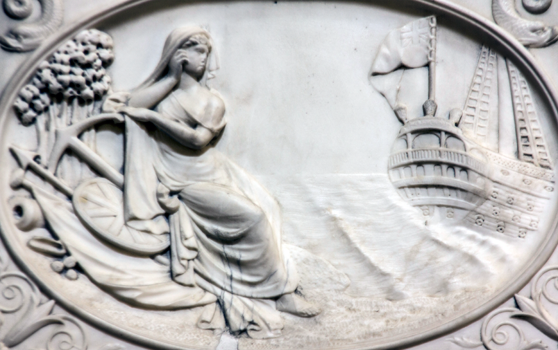 |
| Detail of monumet to Vice Admiral Sir George Murray see above |
Detail of monument to Captain Allen RN see above |
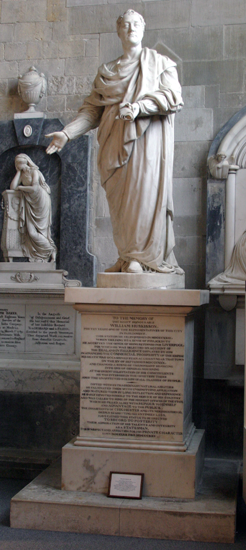 |
North Aisle and Outer Aisle |
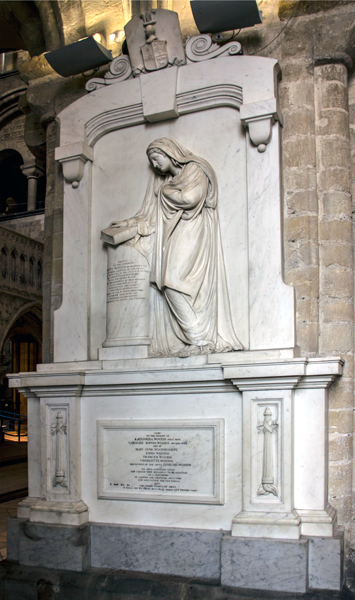 |
|||
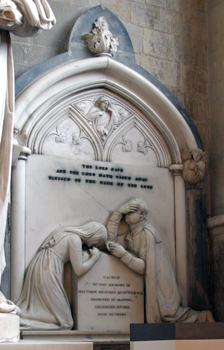 |
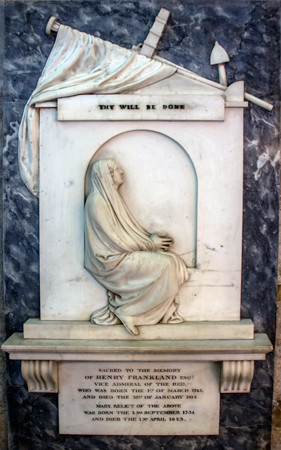 |
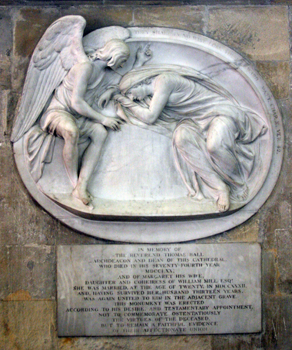 |
|||
| Left: William Huskinson MP (1830) by J E Carew. He was accidentally killed at Newton-le-Willows by a train - the famous Stephenson's Rocket - at the opening of the first passenger railway between Liverpool and Manchester. He was buried in St James's cemetery, Liverpool (adjacent to the Anglican Cathedral), where a mausoleum and tomb remain. This mausoleum formerly contained a life sized statue of Huskinson - robed like a Roman senator - by John Gibson. Above left: Mathew Quantock (1812) by John Flaxman. He was drowned in a skating accident. Above centre: Dean Thomas Ball (1770) by John Flaxman made 1785/6. Above right: Vice-Admiral Henry Frankland (1814) by John Flaxman. Far right: Edmund Woods (1833) by J E Carew | |||||
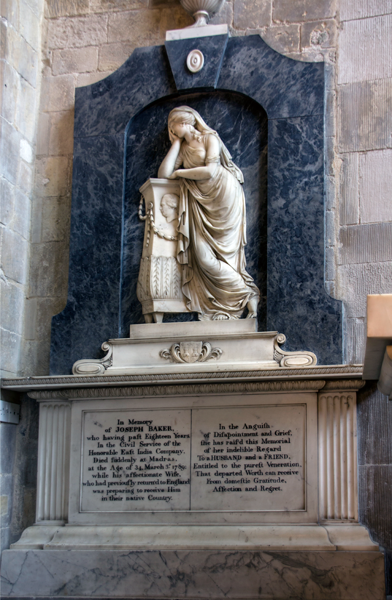 Above: Joseph Baker (1789) by John Hickey (but inscribed 'F Hickley'). Right top: Details from the monument to Joseph Baker. (above) |
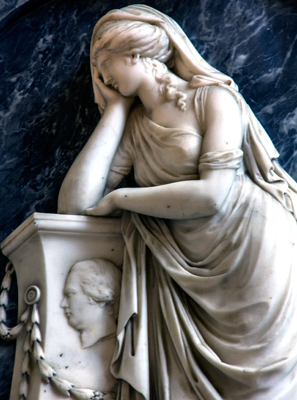 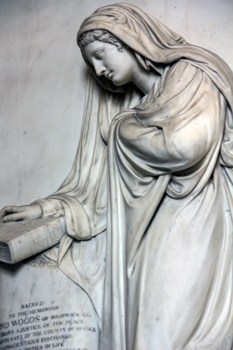 |
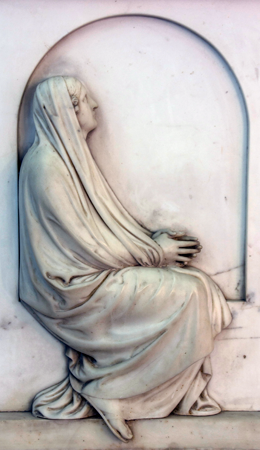 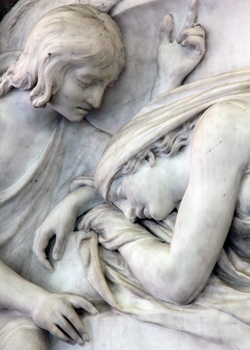 |
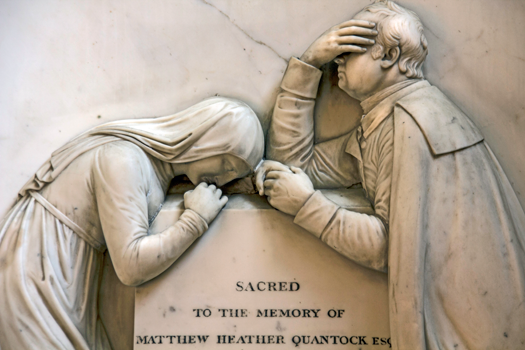 Above: Detail of the monument to Mathew Quantock Far left bottom: Details from the monument to Edmund Woods Left top: Details from the monument to Vice-Admiral Henry Frankland (1814) Left bottom: Details from the monument to Dean Thomas Ball. |
|
|
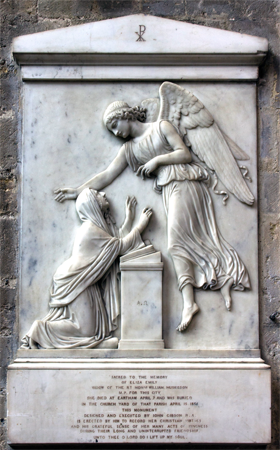 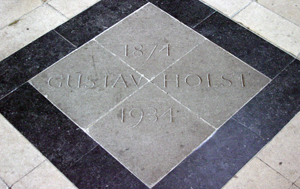 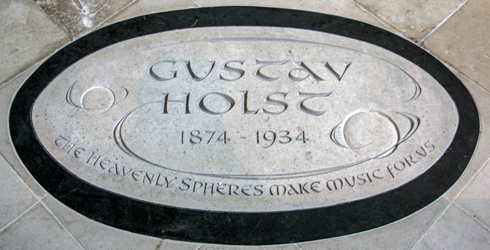 |
North Transept and North East Chapel | ||
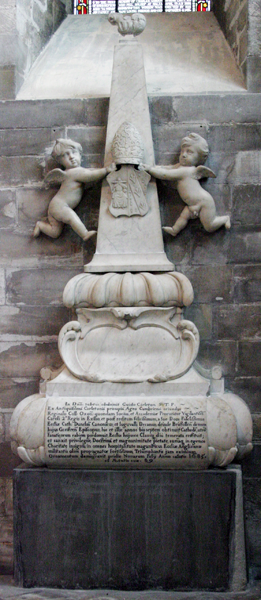 |
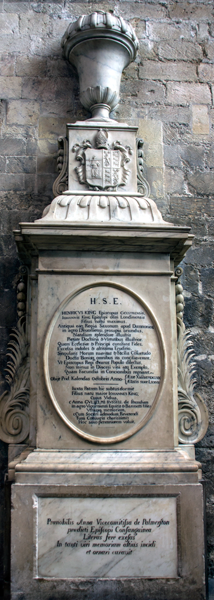 |
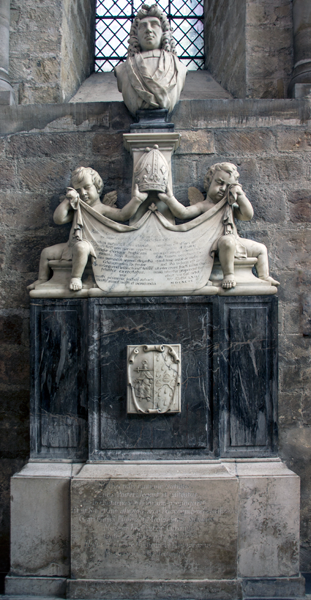 |
|
| Left top: Eliza
Emily Huskinson (1856) Widow of the MP above. By
John Gibson. Left bottom:
Gustav Holst (1937)The English composer, musician and
teacher, probably best known for The Planet Suite. This
simple stone marks where his ashes were buried in the
Cathedral. The top photograph was taken several years
ago: the stone is now replaced by that in the lower. Above left: Bishop Guy Carleton (1685). Above centre: Bishop Robert Grove (1696). Above right: Bishop Henry King (1669) His grave slab is to be found in the NE Chapel. By Bushness (Dr Clive Easter) |
|||
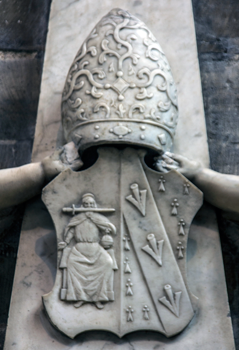 |
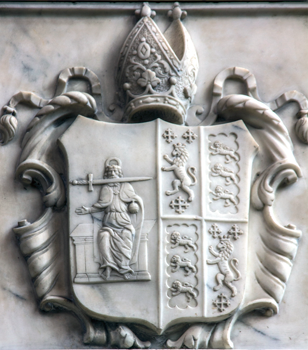 |
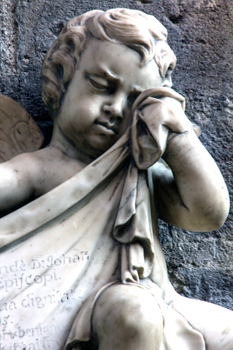 |
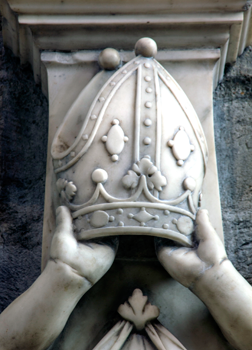 |
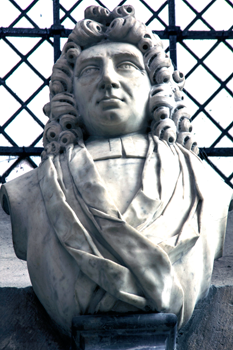 |
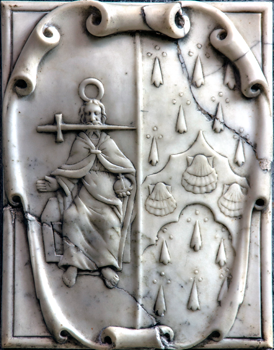 |
| Details from the monument of Bishop Guy Carleton |
Details from the monument of Bishop Robert Grove |
Details from the monument of Bishop Henry King | |||
| North Choir Aisle | ||
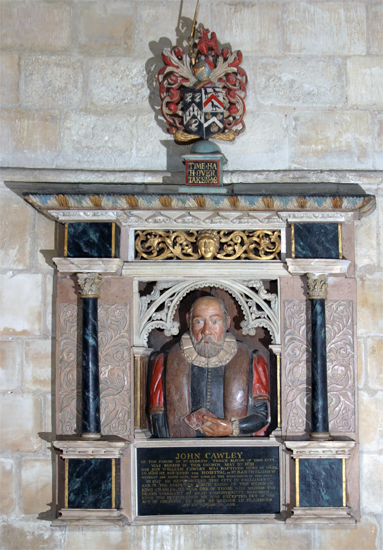  |
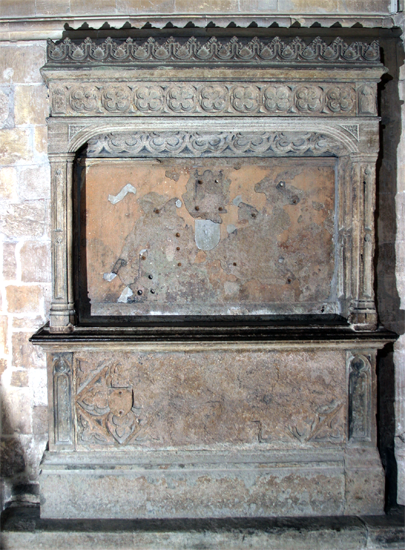 |
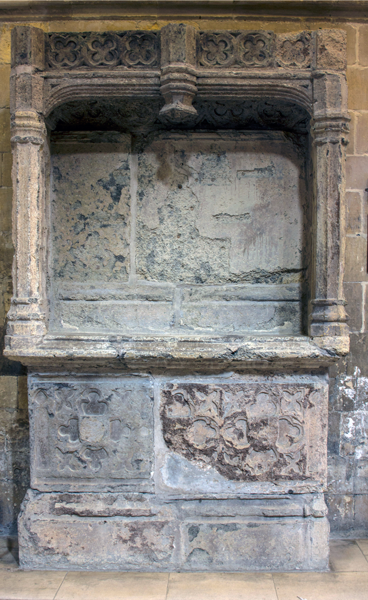 |
| Left top: John
Cawley (1621)
and his son
William (1666) This monument was moved from the redundant parish church of St
Andrew. William was a philanthropist and a stanch
republican, signing Charles I's death warrant. At the
restoration he fled to Belgium, then Switzerland, dying
at Vevey, where he tombstone is preserved in St
Martin's church. However there is a tradition that his
body was returned to England and buried in vault in the
chapel of the hospital he founded in Chichester; a lead
case containing a male skeleton being found there in
1883 but with no inscription. Left bottom:
Coffin 13th century. Harry Tummers reports four such
coffins and tentatively attributes them, all medieval
bishops, to Sefrid
II (1204),
Simon of Wells (1207),
Ranulph of Wareham and
Ralph
Neville (1244). Above: Late
15th/early16th century altar tombs : the outlines of the
lost
brasses of kneeling figures, shields etc can just be made out.
There are five such tombs in the cathedral, all made of Petworth
marble and similar in design. |
||
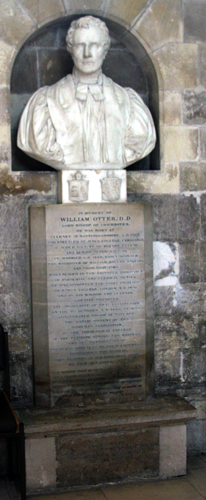 |
Retrochoir: North Aisle and North-East Chapel |
 |
|
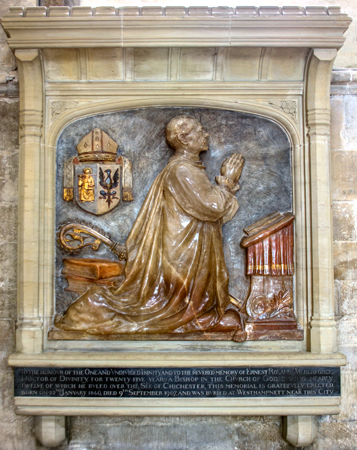 |
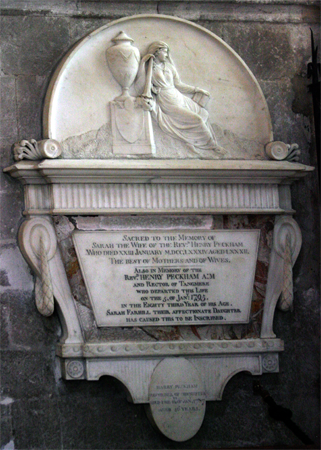 |
||
| Left:
Bishop William Otter (1840) By John Towne. Erected 1861 but bust made
before 1844. Above left:
Bishop Ernest Wiberforce (1907). Alabaster by John Tweed (a pupil of Rodin) Above right: Sarah Peckham (1784) By Charles Harris. Right: Margaret Miller (1701) & Family (chapel) They are buried in a vault in this chapel. |
|||
| Choir | Retrochoir | |
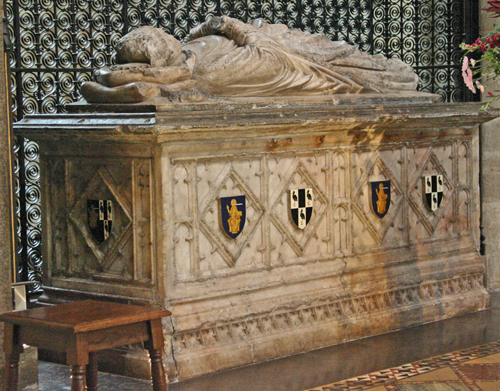 |
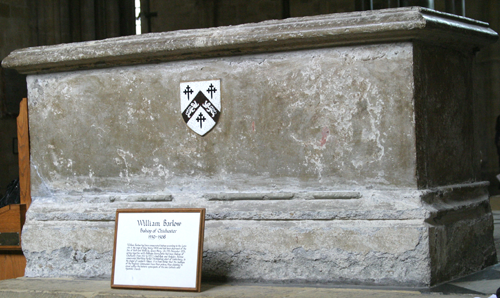 |
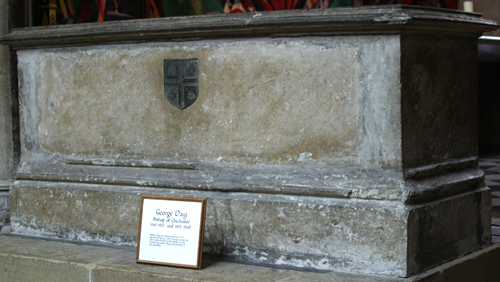 |
| Left: Bishop John Rickingale (1429), also formerly attrib. to Bishop Storey (1503). Alabaster. Above left: Bishop William Barlow (1568) This and the following tomb are in situ. The shields (there is another on the opposite side) are modern. Above right: Bishop George Day (1558) The bass set into the matrix on the lid dates from 1832/42 but the brass shield with his arms is much older. | ||
| Lady Chapel | Retrochoir - South Aisle & SE Chapel | |||
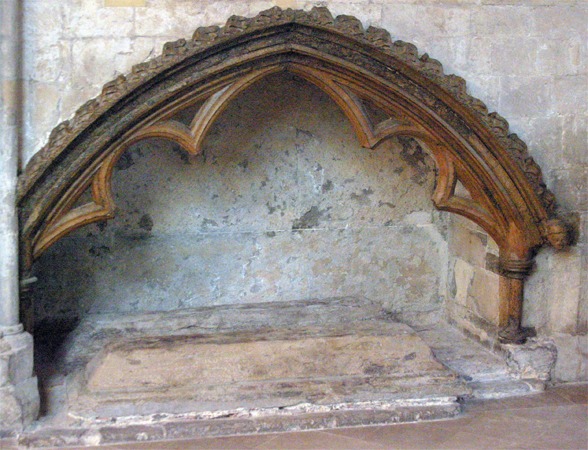  |
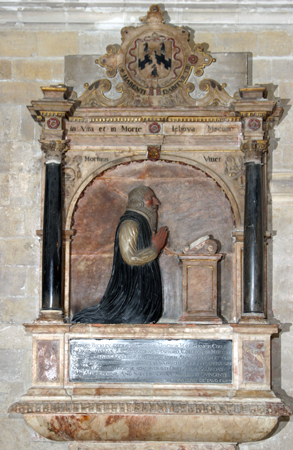 Left top: The niche tomb is attributed to Bishop Gilbert of St Leofard (1304) . The two coped coffins are not in situ although the niche tomb is. Left bottom: Bishop Ralph de Luffa (1123) A crozier and mitre are carved in low relief on the lid. Above: Bishop Thomas Bickley (1596) This monument was originally in the retrochoir. |
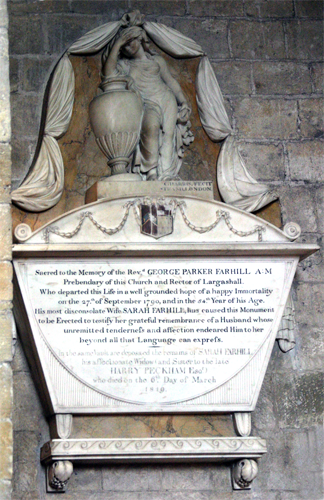 Above: George Farnhill (1790) By Charles Harris Right: Frances Waddington (1728) Set up by her husband Bishop Edward Waddington |
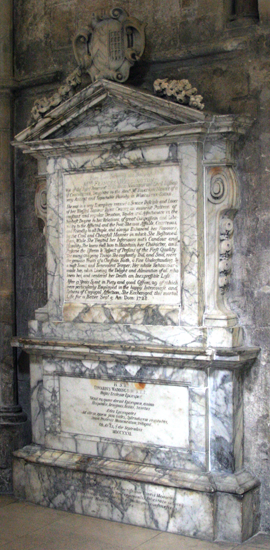 |
|
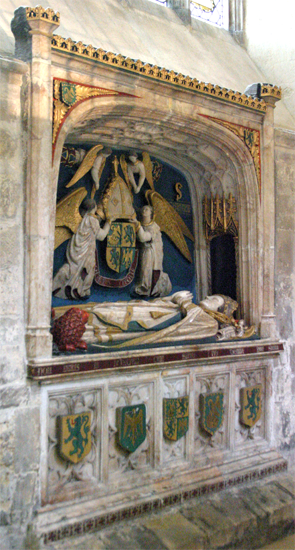 |
Choir - South Aisle |
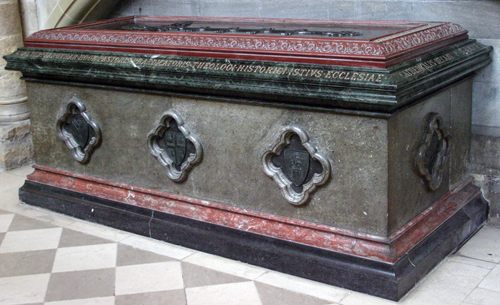 |
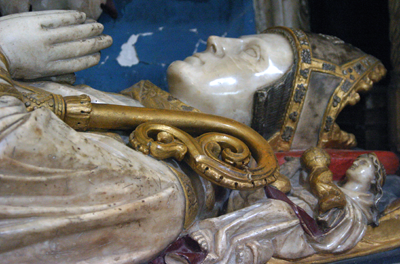 |
||
| Left and above: Bishop Robert Sherburne (1536) Still in situ in
the south wall; it
was originally covered by a curtain which was only
opened on certain days. Right top: Dean Walter Hook by George Gilbert Scott. Right bottom: Another 13th century coffin. |
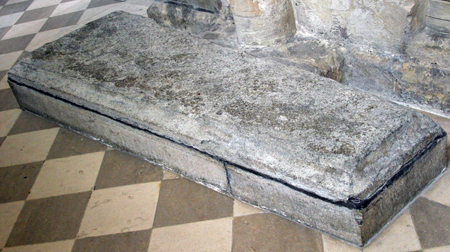 |
| South Transept | ||||||||||
|
||||||||||
| South Aisle | ||
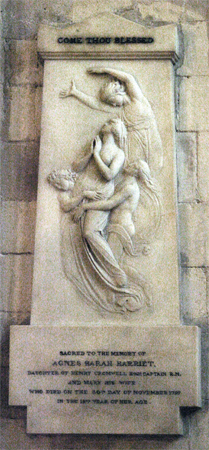 |
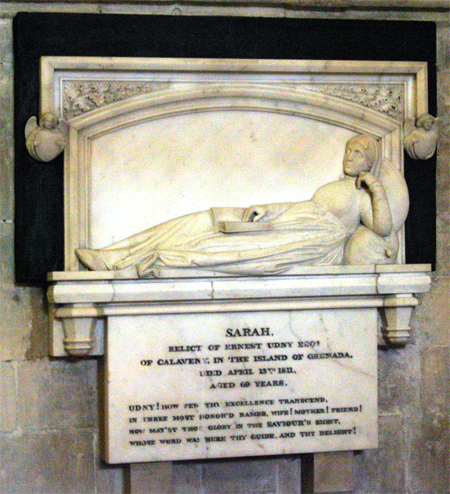 |
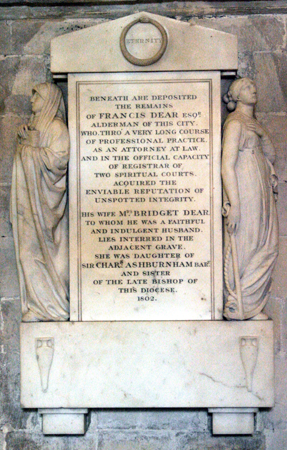 |
| Agnes Sarah Harriet Cromwell
(1789), Aged 17. by John Flaxman, erected 1800 |
Sarah Udny (1811) By John Flaxman |
Francis Dear (1802) By John Flaxman |
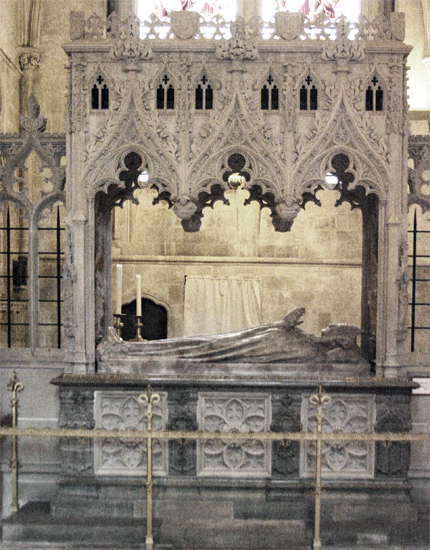 |
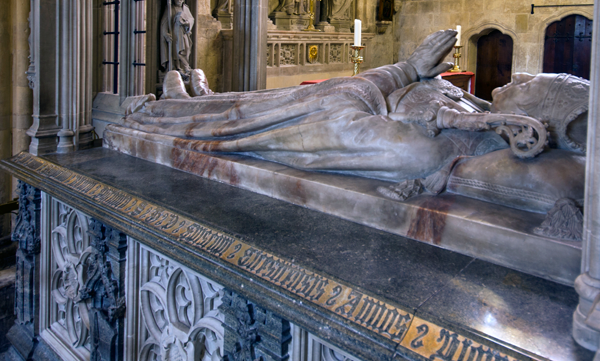 Left, above and right: Bishop Durnford (1895) cenotaph By George Bodley & Thomas Garner; L J Chavalliaud made the effigy Right top: Brass Matrix set into wall |
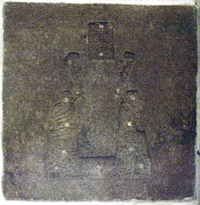 |
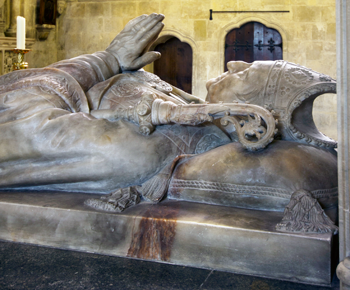 |
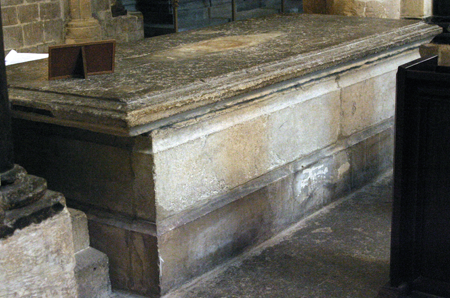 |
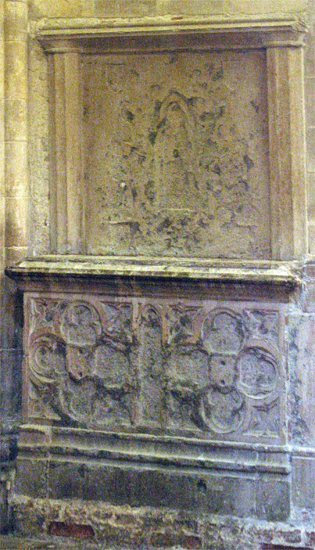 |
| Above:
Bishop Arundel
(1477).
Note the
matix of a lost brass Right: Another of the late 15th/early 16th century altar tombs Note the brass matrix of a bishop If you wish to speculate whose tomb this might be, visit this site. |
| South West Tower | |||
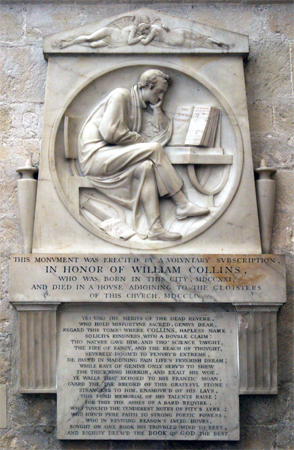 |
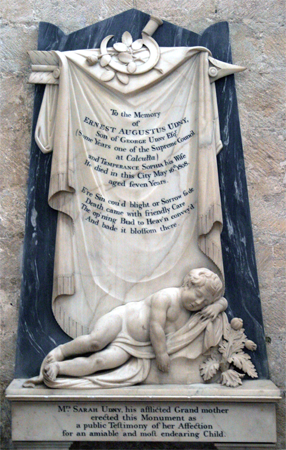 |
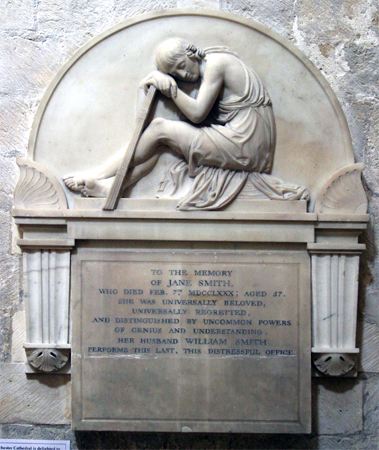 |
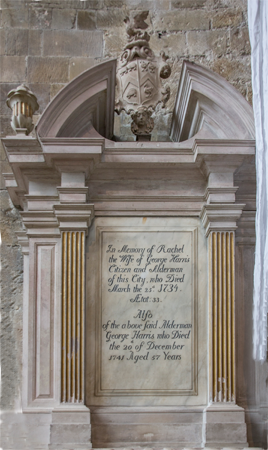 |
|
William Collins (1759)
The Chichester poet By John Flaxman, erected 1795 |
Ernest Udny (1880) By Henry Westmacott |
Jane Smith (1780) By John Flaxman |
Rachel & George Harris (1741 & 1734) unsure |
| The Cloisters | |
| Unfortunately , and unintentionally, I did not include the cloisters in my survey. Amanda sent me these two photographs, but, as may be see from the general shot there are several 18th century and early 19th century monuments. There is one of 1595, shown below | |
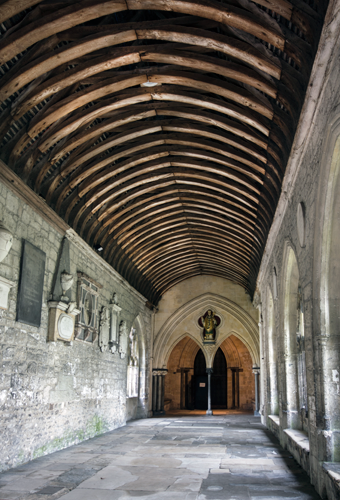 |
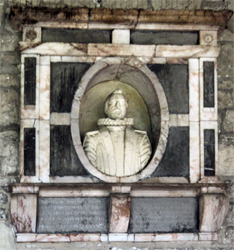 |
| Left:
General aspect of one arm Above: Percival Malpage (1595) |
|
| Ringmer - St Mary | |||
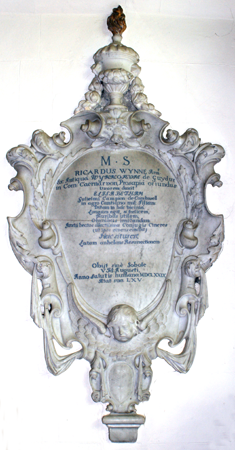 |
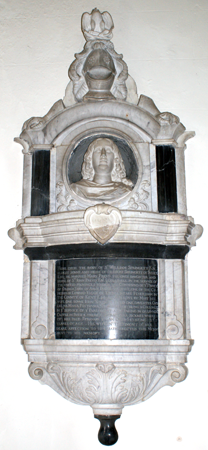 |
.png) |
|
| Richard Wynne (1679) Latin inscription |
Sir William Springett (1643) | Sir Harbert Whalley (1689) | |
|
Boxgrove St Mary & St Blaise |
Racton | Thakehame | Rye - St Mary |
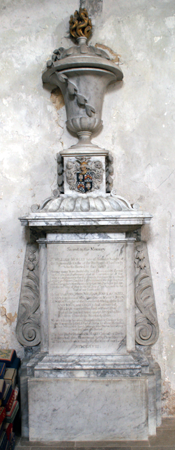 |
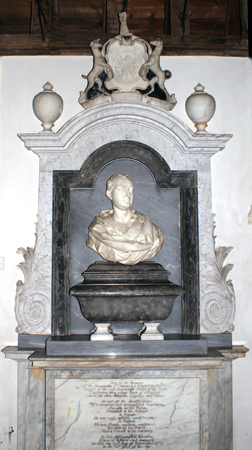 |
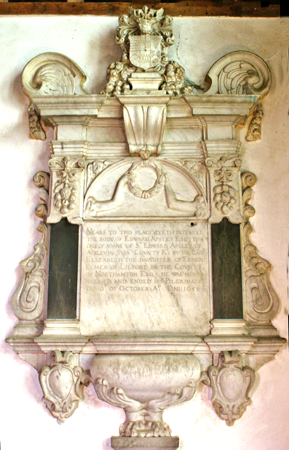 |
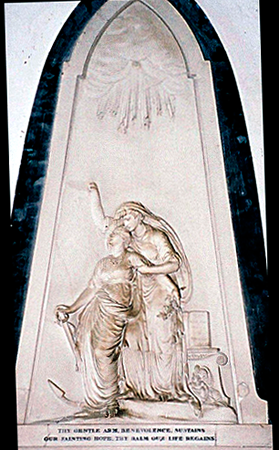 |
| Sir William Morley.
Erected 172 |
Sir Charles Gounter Nicholl (1733)
by Henry Cheere Bust by Roubilliac (Dr Clive Easter) |
Edward Apsley
(1651) Possibly by T Burman |
John Wollett
(1819) Signed: J. Bacon inv., S. Manning ft. |
| Engravings from Edward Blore | |
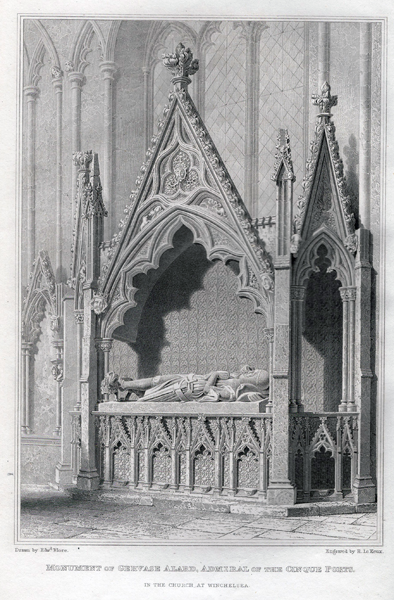 I am adding a series of prints from steel plate engavings from Edward Blore's Book; I will put these into their correct places when I have received more information about Sussex. Above: Gervase Allard, Admiral of the Cinque. Winchealsea Church Left Top: Thomas, Earl of Arundel and Countess Beatrix. Arundel Church Left bottom: Sir Anthony Browne. Battle Church |
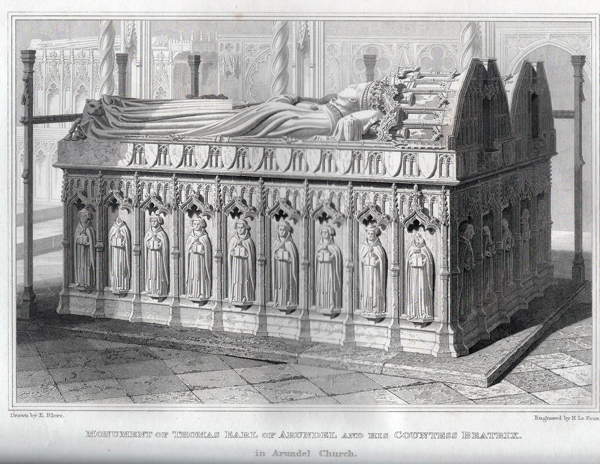 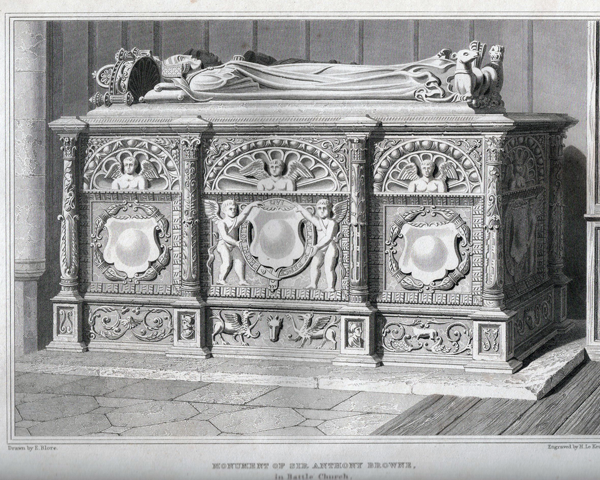 |
